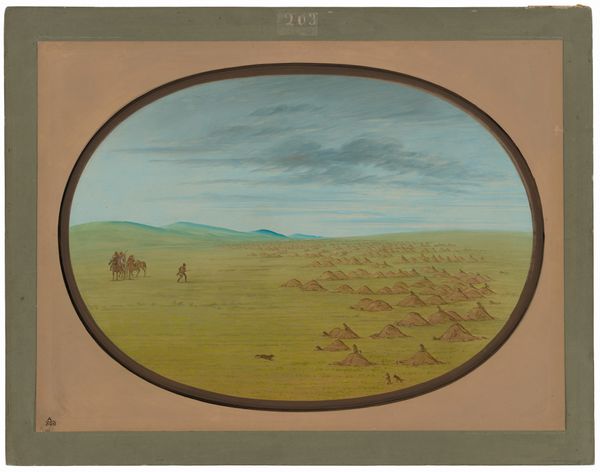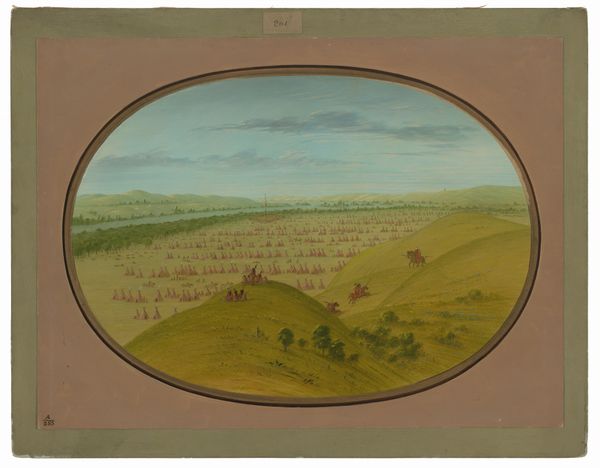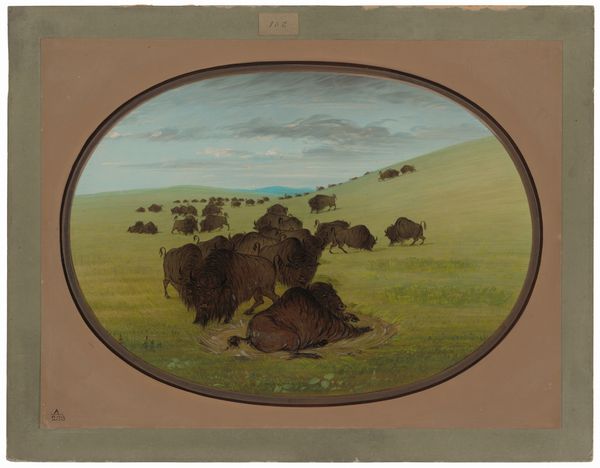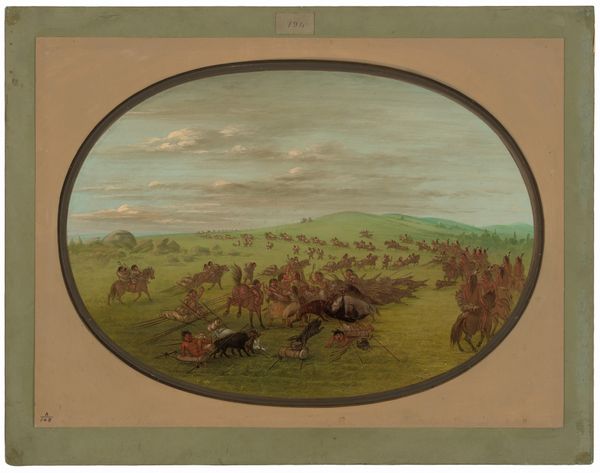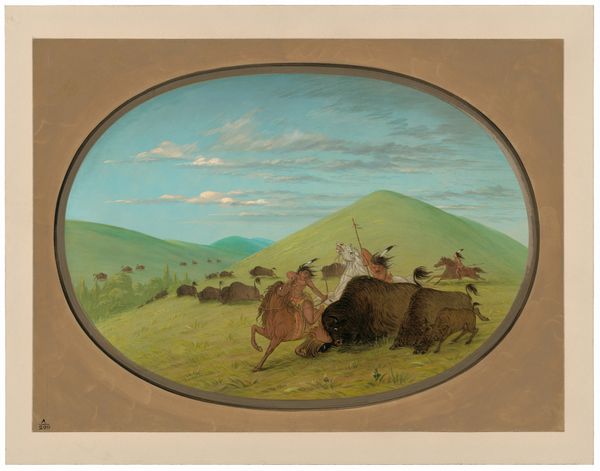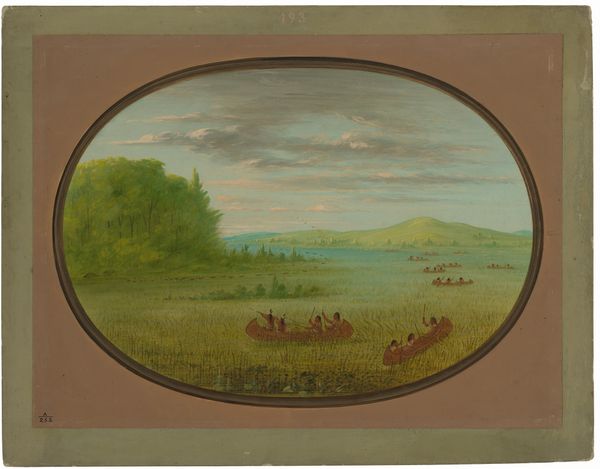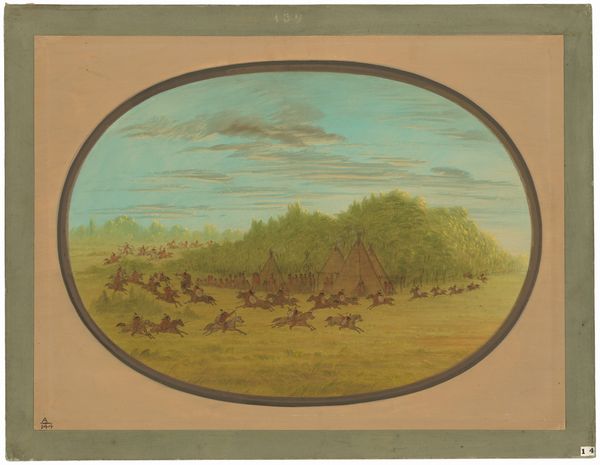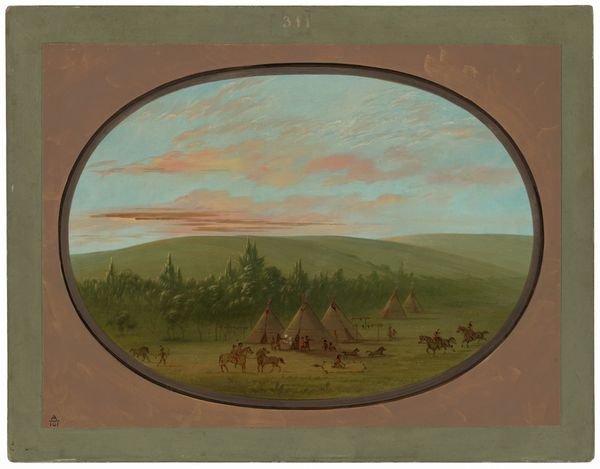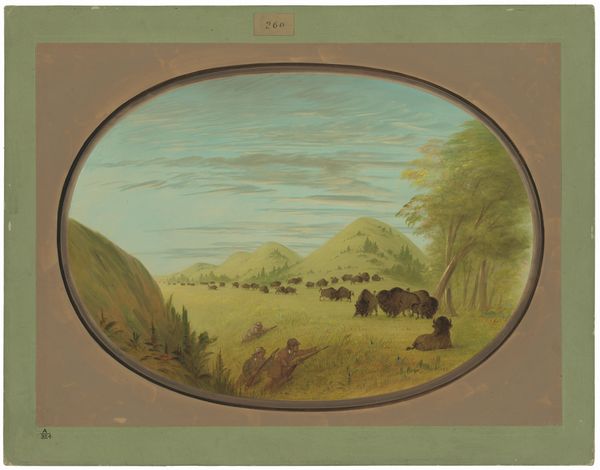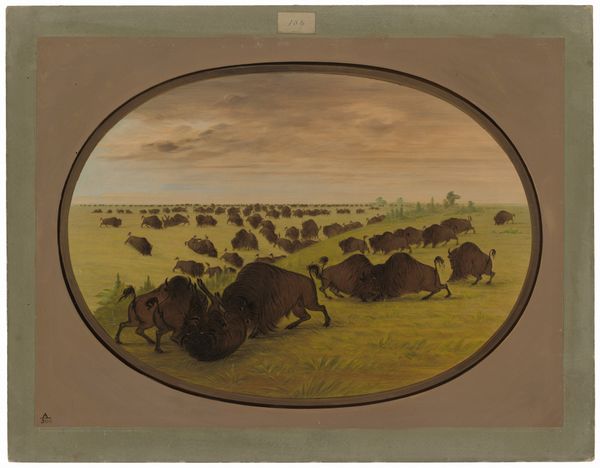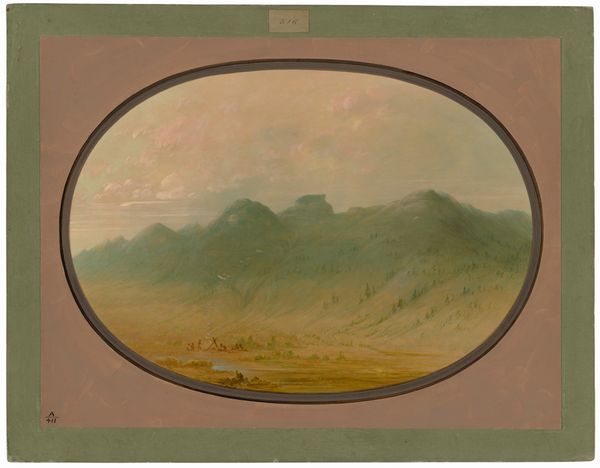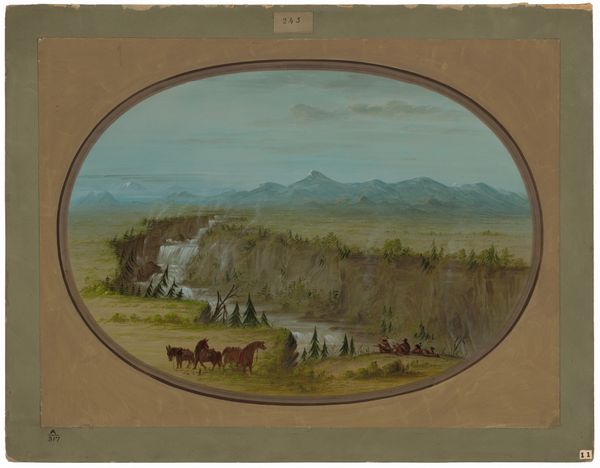
Dimensions: overall: 47 x 63.1 cm (18 1/2 x 24 13/16 in.)
Copyright: National Gallery of Art: CC0 1.0
Curator: This is George Catlin’s “Wild Cattle Grazing on the Pampa del Sacramento,” created between 1854 and 1869. Catlin was dedicated to documenting Indigenous peoples and the landscapes of the Americas. Editor: The vastness is almost overwhelming, wouldn't you say? There’s this sense of immense space. But the framing of the oval creates the sense of a porthole; almost as though we’re observing something untouchable and inaccessible. Curator: Precisely! The oval format adds a layer of distance, doesn’t it? I think it reinforces a key element of Catlin's work. His representations often occurred as settler colonialism actively displaced Indigenous people. It emphasizes this act of observation from the outside looking in. How the land changed in a few short decades is startling. Editor: I can see what you mean. Buffalo represent much more than just animals here; for many they signify cultural wealth, livelihood, a sacred connection to place. Their dwindling numbers mirror the decline of Indigenous ways of life under relentless pressure from outside influences. It reflects a sense of loss. Curator: Exactly. And let's not overlook the choice of medium—watercolor. Its transparency echoes the fragile state of this environment. While Catlin presented himself as an advocate, his work can still perpetuate a romanticized view, obscuring the very real consequences of expansion and ecological damage on a global scale. We must ask how this vision served, then and now. Editor: You’ve really shifted my thinking! Even the pastel color palette is deceptive—almost lulling the viewer into complacency, even while the larger truth of displacement is more visible when reframed like that. I think I can feel an echo of a future yet to come from looking into this artistic portal of the past. Curator: Ultimately, these images serve as an incomplete, though still potent archive, reminding us that representations are always deeply shaped by context. Thank you, this conversation really made me see the piece with renewed depth. Editor: The perspective you provided on representation here changed my understanding of the image and, honestly, that will stay with me for a while!
Comments
No comments
Be the first to comment and join the conversation on the ultimate creative platform.
